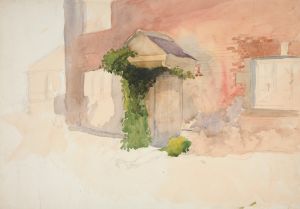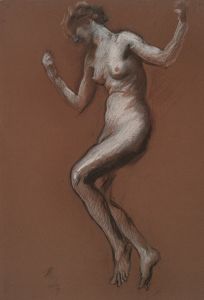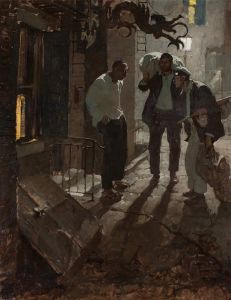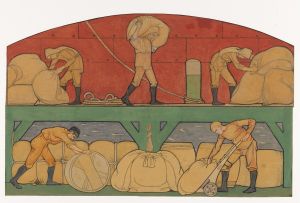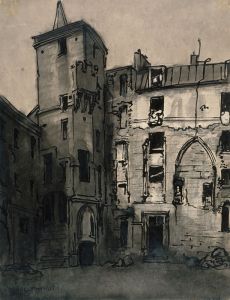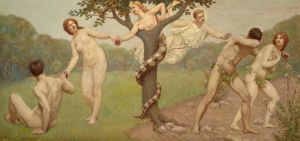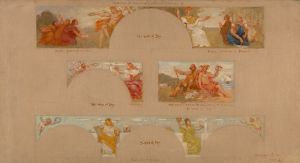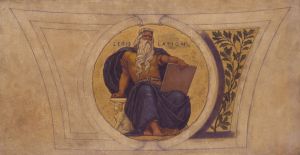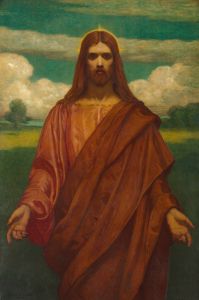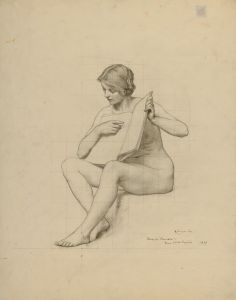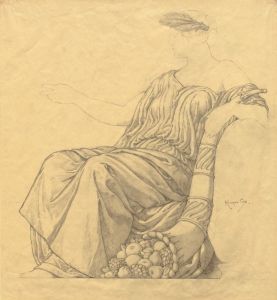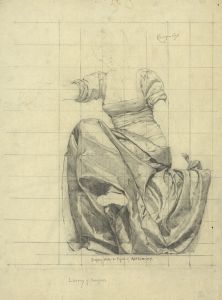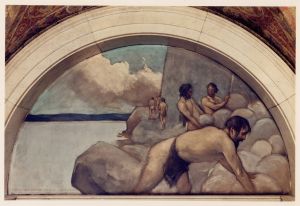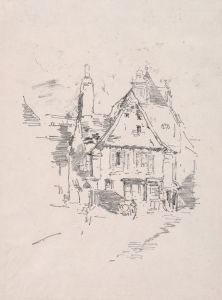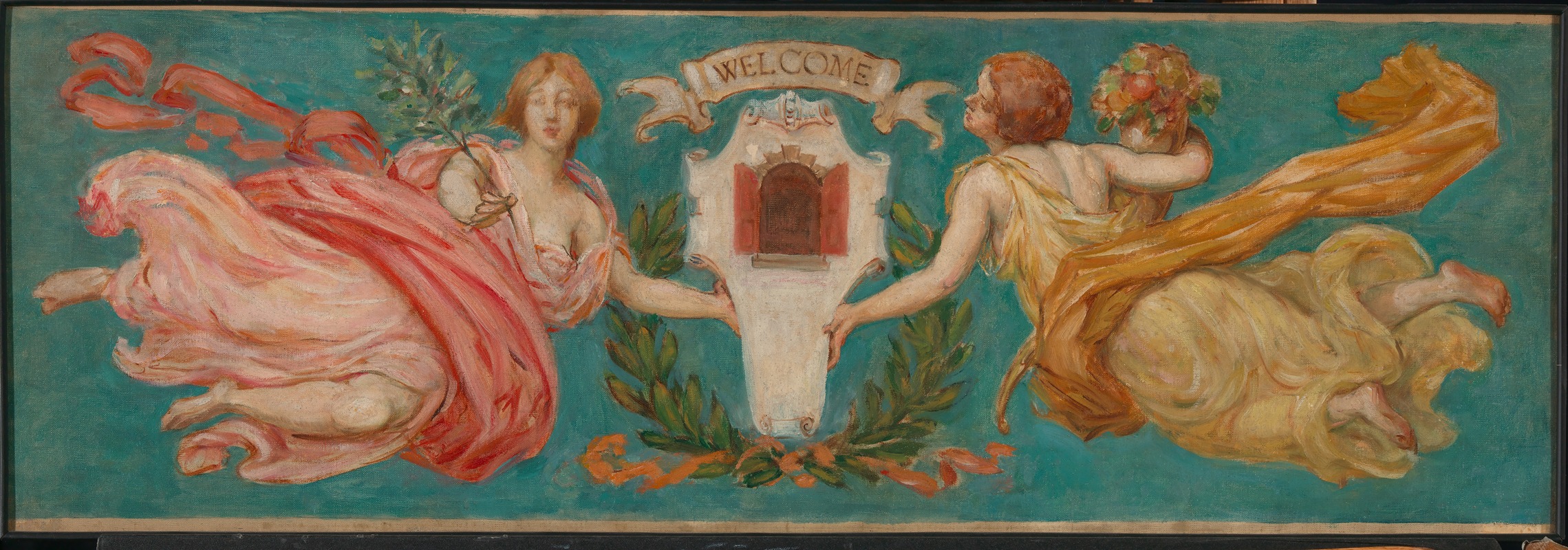
Study for Mural at Hotel Manhattan, ‘Peace and Plenty’
A hand-painted replica of Kenyon Cox’s masterpiece Study for Mural at Hotel Manhattan, ‘Peace and Plenty’, meticulously crafted by professional artists to capture the true essence of the original. Each piece is created with museum-quality canvas and rare mineral pigments, carefully painted by experienced artists with delicate brushstrokes and rich, layered colors to perfectly recreate the texture of the original artwork. Unlike machine-printed reproductions, this hand-painted version brings the painting to life, infused with the artist’s emotions and skill in every stroke. Whether for personal collection or home decoration, it instantly elevates the artistic atmosphere of any space.
Kenyon Cox was an influential American painter, illustrator, muralist, and writer, known for his contributions to the American Renaissance movement in art during the late 19th and early 20th centuries. One of his notable works is the "Study for Mural at Hotel Manhattan, ‘Peace and Plenty’," which reflects his dedication to classical themes and allegorical representation.
Kenyon Cox was born on October 27, 1856, in Warren, Ohio. He studied at the Pennsylvania Academy of the Fine Arts and later in Paris at the École des Beaux-Arts, where he was influenced by the academic style of painting. Upon returning to the United States, Cox became a prominent figure in the American art scene, advocating for a return to classical ideals and techniques in art.
The "Study for Mural at Hotel Manhattan, ‘Peace and Plenty’" was created as a preparatory work for a larger mural intended for the Hotel Manhattan in New York City. This study, like many of Cox's works, embodies the neoclassical style that he championed, characterized by its emphasis on harmony, proportion, and the depiction of idealized figures.
The mural was designed to convey themes of prosperity and harmony, common motifs in Cox's work, which often included allegorical figures representing abstract concepts. In "Peace and Plenty," Cox likely aimed to depict the abundance and tranquility of the era, reflecting the optimism and economic growth of the United States during the late 19th century. Such themes were popular in public and private buildings of the time, as they conveyed a sense of stability and progress.
Cox's murals were known for their meticulous composition and classical references, drawing inspiration from ancient Greek and Roman art. His work often featured figures in flowing drapery, set against architectural backgrounds that suggested grandeur and timelessness. This approach was consistent with the American Renaissance movement, which sought to create a national art that was both modern and rooted in the classical tradition.
The Hotel Manhattan, where the mural was intended to be installed, was one of the many grand hotels built in New York City during this period. These hotels often featured elaborate decorations and artworks, serving as symbols of luxury and cultural sophistication. Murals like Cox's "Peace and Plenty" were integral to the aesthetic and cultural identity of such establishments.
Unfortunately, many of these murals have not survived due to renovations, demolitions, or changes in ownership of the buildings they adorned. As a result, studies and preparatory works like Cox's "Study for Mural at Hotel Manhattan, ‘Peace and Plenty’" are valuable records of the artist's vision and the artistic trends of the time.
Kenyon Cox's legacy extends beyond his paintings and murals; he was also a respected art critic and writer, contributing to the discourse on art and its role in society. His advocacy for classical art and his contributions to public art projects have left a lasting impact on American art history.
In summary, the "Study for Mural at Hotel Manhattan, ‘Peace and Plenty’" by Kenyon Cox is a testament to the artist's skill in blending classical themes with contemporary American ideals. It reflects the cultural aspirations of the era and Cox's commitment to creating art that was both beautiful and meaningful.





